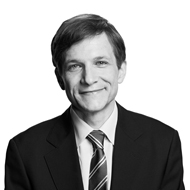The Gloomy Economic Message Hidden in the Fed Statement
Money is not a client of any investment adviser featured on this page. The information provided on this page is for educational purposes only and is not intended as investment advice. Money does not offer advisory services.
For the uninitiated, here's a primer on Fed-ology 101: When the economy looks stronger, the Federal Reserve will want to raise interest rates to curb inflation. And once the Fed’s benchmark rates go up, that's generally bad for the price of bonds — and (indirectly) for stocks too.
But we aren't in a 101 class right now.
On Wednesday, Fed chair Janet Yellen announced the latest Federal Open Market Committee decision on rates, and dropped the word "patient" from her statement. That's a signal that the Fed could raise rates as early as June. In other words, it thinks the economy is healing from the Great Recession.
So what happened next? The stock and bond markets rallied. That's partly because the market already expected the language change. But it may also be because traders hear the Fed suggesting something a bit unnerving about the economy.
Along with the statement on current rates, the Federal Reserve also releases a survey of where FOMC members expect rates to go in the future. They brought down their estimates for where short-term interest rates are headed next year, from a median of 2.5% to 1.875%. In other words, even if the economy is getting better, the definition of "better" is looking a little slower than previously thought.
This at least rhymes with, even if it does not confirm, a worry among some economists that the global economy could be at risk of something called "secular stagnation," or a pokey "new normal." In a new normal world, interest rates and inflation tend to be lower for longer, but long-term growth is subdued too.
Factors that might contribute to a long-run slowdown range from inequality (which dampens demand) to demographics (slowing the growth of the workforce) to technology (which could mean companies need fewer workers and less capital investment.) Economist Lawrence Summers, who put the phrase "secular stagnation" on the map, says that this is a risk to be guarded against, not a sure thing or even the most likely one. And "new normal" has been a bit of a fad among bullish bond investors, who of course may be overconfident in their prediction that rates will stay low.
That said, the Fed's latest statement is a reminder that the global economy is still very wobbly.
